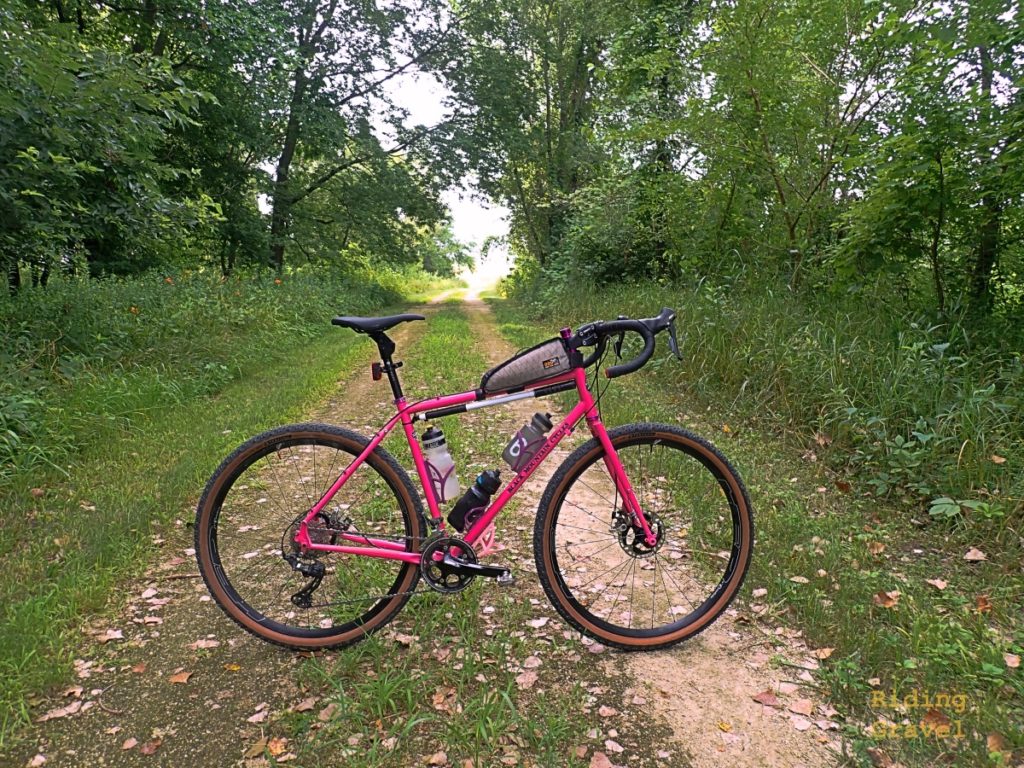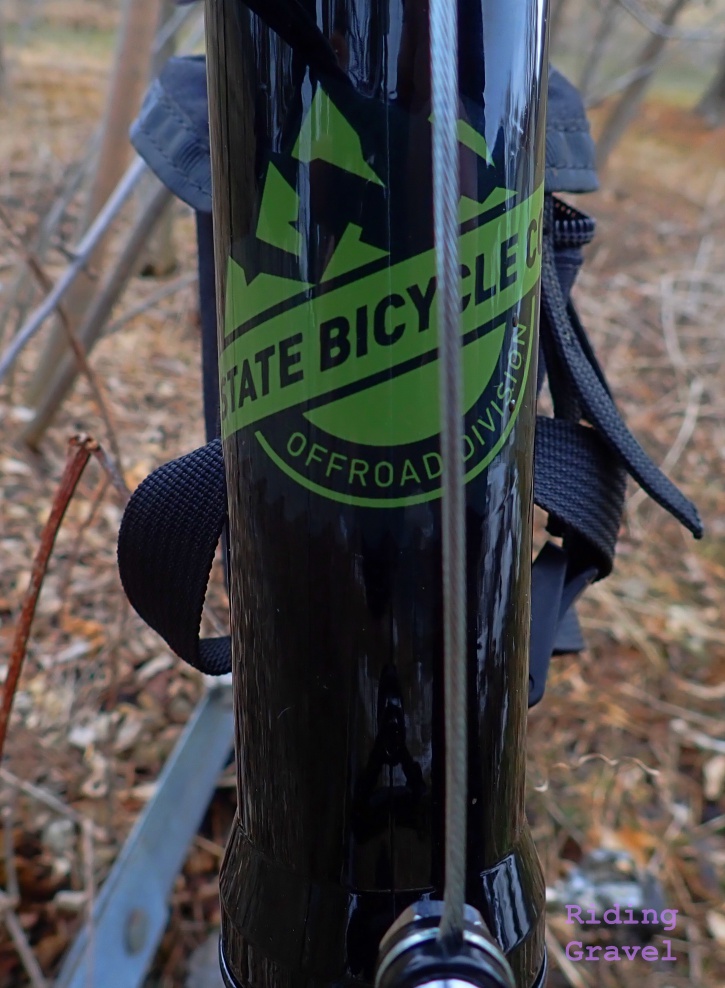Cirrus Cycles Kinekt Stem: At The Finish – by Guitar Ted
The suspension stem idea seemed to die when the mid-90’s idea of telescopic front forks finally became the norm for mountain biking. However; gravel and back-road riding has seen a resurgence in interest in this idea. Many new ideas for gravel travel are being looked at which resemble the old MTB suspension stems. The Kinekt Stem from Cirrus Cycles might look kind of like one of those old dinosaurs of the suspension stem era, but its mission is a bit different this time around. You can check out my introduction here for all the technical information and for my initial thoughts on this device made to increase comfort and control on the gravel.

Last time I wrote about this stem I mentioned that it was very active. I also wanted to see if this rather simple design had anything to offer the rider beyond coil sprung vibration absorption. So, it was off to the gravel roads of Iowa to see how the Kinekt Stem would fare.
The Kinekt Stem has a steel coil spring in it, of course, and this becomes important when dissecting what is going on when you ride it on gravel roads.

Let’s think about a steel coil spring for a moment. What happens when you drop it? Well, it bounces around a bit, that’s for sure. It makes a ringing noise as well, right? Well, that bouncing is the coil’s way of dispersing the energy it absorbed from the initial drop. That ringing noise is also another way it does this. Things like shock absorbers (dampers) on automobiles help to control such coil sprung unruliness. In more sophisticated bicycle suspension designs, a damper is also employed to control how this energy gets released, usually as heat.
The Kinekt Stem has no damping mechanism. This means that energy put into the coil gets released as a secondary ‘bounce’, if you will, at times. Mostly though, it gets into a kind of oscillation, or a ‘ringing’ effect, which results in a high frequency vibration that you feel through the handlebars at all times on gravel. It is very much like a spring in an electric guitar amplifier’s reverb tank, if you are familiar with that concept. Yes…..that’s not a good thing.
In fairness I sent my concerns along to Cirrus Cycles via my contact for this review. Following is a response from Calvin Collander, the Design Engineer at Cirrus Cycles: “As for the spring vibration issue, this is not something I have personally experienced on the stem. I do agree that on rougher roads a damper would significantly help control the movement of the stem and provide more comfort. This would also help the top-out harshness.”
Now, that isn’t to say all is bad with the Kinekt Stem. It handles certain features really well. Dips, shallow depressions, rougher grass tracks, and the occasional stick or small branch all get sucked up to such a degree as to be inconsequential. However; once you pass the threshold of travel on tap (20mm maximum), you might start to feel those sharp hits all of a sudden. Plus, when the coil rebounds off such bigger impacts it ‘tops out’ to the extent that you feel and hear a solid ‘clunk’. So, it isn’t an off-road device, and Cirrus Cycles says as much.

At The Finish: Besides the high frequency vibration issue, I also felt as though the simple mechanism of the coil spring was letting me down in situations where handling was challenging. For example, in deep gravel at speed, when the wheel would dart one way, I would try to correct with an instinctive counter-weight shift. However, that only activated the stem, and then by the time I could correct for that, the bike was doing something else, and the handling feel was one of being slightly out of control and of being too loose. Not my cup of tea at all.
So, in the end, I was disappointed in the Kinekt Stem. It has a lot of potential, but as it is, I feel it is far too simplistic to be a good device for gravel riding. It needs a damper, for starters, and a way to get a stiffer pre-load, which is user adjustable, as with Kinekt’s seat post, is also a must to my mind. These things might help alleviate that ringing, high frequency vibration the stem exhibits on gravel. Collander responded to the preload criticism and said, “The lack of preload is by design. The suspension works best when there is sag, because that way the handlebars can “float” and absorb small vibrations.”
Also, even with the stiffest spring Kinekt offers installed, I could activate the stem into its travel merely by laying my hands on the hoods. That seems a bit too compliant, in my opinion. (Note: Calvin Collander also mentioned that users of this stem can install McMaster spring 9588K32, or call Cirrus Cycles as they have a few of these springs on hand.)
Perhaps these things I’m suggesting were eschewed due to their weight additions, and this stem is already heavy. No getting around that. But suspension adds weight, and if we are going to have it, it needs to offer all the benefits gravel riders expect to gain for the weight trade off. Right now, the Kinekt Stem, as is, falls a bit short and it doesn’t feel anything like a traditional stem in terms of handling. This may or may not be something riders take a liking to. In deference to Cirrus Cycles, they are listening to criticisms and are planning on looking at ways to improve the stem design.
The Kinekt Stem might be all you are looking for, and perhaps a simple design is best for some. However; in an era where suspension, and the expectations of benefits from suspension, are sophisticated and at a high level, the Kinekt Stem, while showing lots of promise, doesn’t seem quite all the way ‘there’ yet.
Note: Cirrus Cycles sent the Kinekt Stem over for test and review to Riding Gravel at no charge. We are not being paid, nor bribed for this review, and we always strive to give our honest thoughts and opinions throughout.











Thank you Guitar Ted for an honest and fair review!